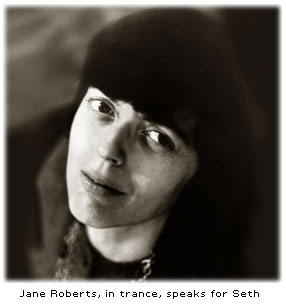Seth (Hebrew: שֵ×תֿ, Standard Å et, Tiberian Å Ä"ṯ; Arabic: شيث‎ Shith or Shiyth or Sheeth; placed; appointed"), in Judaism, Christianity and Islam, was the third son of Adam and Eve and brother of Cain and Abel, who were the only other of their children mentioned by name in the Tanakh (Old Testament). According to Genesis 4:25, Seth was born after Abel's murder, and Eve believed God had appointed him as a replacement for Abel.>
Genesis

According to Genesis, Seth was born when Adam was 130 years old "a son in his likeness and image." The genealogy is repeated at 1 Chronicles 1:1â€"3. Genesis 5:4â€"5 states that Adam fathered "sons and daughters" before his death, aged 930 years. According to the Bible, Seth lived to the age of 912.
Jewish tradition
Seth figures in The Life of Adam and Eve, also known, in its Greek version, as the Apocalypse of Moses, a Jewish pseudepigraphical group of writings. It recounts the lives of Adam and Eve from after their expulsion from the Garden of Eden to their deaths. The surviving versions were composed from the early 3rd to the 5th century, the literary units in the work are considered to be older and predominantly of Jewish origin. There is wide agreement that the original was composed in a Semitic language in the 1st century AD/CE. In the Greek versions Seth and Eve travel to the doors of the Garden to beg for some oil of the tree of mercy (i.e. the Tree of Life). On the way Seth is attacked and bitten by a wild beast, which goes away when ordered by Seth. Michael refuses to give them the oil at that time, but promises to give it at the end of time, when all flesh will be raised up, the delights of paradise will be given to the holy people and God will be in their midst. On their return, Adam says to Eve: "What hast thou done? Thou hast brought upon us great wrath which is death." (chapters 5-14) Later only Seth can witness the taking-up of Adam at his funeral in a divine chariot, which deposits him in the Garden of Eden.
Rashi (Rabbi Shlomo Yitzhaqi) refers to Seth as the ancestor of Noah and hence the father of all mankind, all other humans having perished in the Great Flood.
In gnosticism, Seth is seen as a replacement given by God for Abel, whom Cain had slain. It is said that late in life, Adam gave Seth secret teachings that would become the kabbalah. The Zohar refers to Seth as "ancestor of all the generations of the tzaddikim" (Hebrew: righteous ones).
According to Seder Olam Rabbah, based on Jewish reckoning, he was born in 130 AM. According to Aggadah, he had 33 sons and 23 daughters. According to the Seder Olam Rabbah, he died in 1042 AM.
Islam

Islamic tradition reveres Seth as the third son of Adam and Eve. It views him as a righteous son and sees him as the gift bestowed upon Adam after the death of Abel. Although Seth is not mentioned in the Qur'an, Muslim tradition generally regards him as a prophet like his father, and the one who continued teaching mankind the laws of God after the death of Adam. Islamic lore gives Seth an exalted position among the Antediluvian Patriarchs of the Generations of Adam, and some sources even cite Seth as the receiver of a scripture.
Islamic literature holds that Seth was born when Adam was past 100 and that, by the time Adam died, Adam had already made Seth the heir to him in guiding his people. Muslims hold that Seth was given wisdom in several different aspects of life, including knowledge of time, a prophetic vision of the future Great Flood, and inspiration on the methods of night prayer. Islam, like Judaism and Christianity, traces the genealogy of mankind back to Seth, since Abel did not leave any heirs and Cain's heirs, according to tradition, were destroyed by the Great Flood. In Muslim tradition, many of the traditional Islamic crafts are also traced back to Seth, such as the making of horn combs. Seth has also played a role in Islamic mysticism, known as Sufism, and Ibn Arabi included a chapter in his Bezels of Wisdom on Seth, titled "The Wisdom of Expiration in the Word of Seth".
Some Muslims believe that Seth's tomb is located in the village of Al-Nabi Shiyth (literally meaning "The Prophet Seth") in Lebanon, where a mosque is named after him. A rival tradition, mentioned by Arab geographers from the 13th century onwards, placed the tomb of Nabi Shith ("Prophet Seth") in the Palestinian village of Bashsheet southwest of Ramla village. Indeed, according to the Palestine Exploration Fund, Bashshit stands for Beit Shith, meaning "House of Seth". The village was depopulated with the creation of Israel in 1948, but the three-domed structure considered Seth's tomb still exists in the Israeli moshav Aseret built on the site.
Abu l-Hasan al-Masudi writes, "One of the two pyramids (of Giza) is the tomb of Agathodaimon (Seth), the other one is the tomb of Hermes, (Idris, Enoch). Between the two 1000 years elapsed, Agathodaimon was the older one". Additionally, Jean Doresse, in The Secret Books of the Egyptian Gnostics writes, "Seth... is known in Islam, and usually assimilated to Agathodaimon, who is one of the great figures of Hermetic literature. The prophetic prestige with which the Gnostics endowed him, he still possesses, especially in the traditions of various Shi'ite groups, therefore chiefly in Mesopotamia or in Iran. In these particular doctrines the survival of Gnostic themes is ubiquitous and seems immense..."
According to Josephus

In the Antiquities of the Jews, Josephus refers to Seth as virtuous and of excellent character, and reports that his descendants invented the wisdom of the heavenly bodies, and built the "pillars of the sons of Seth", two pillars inscribed with many scientific discoveries and inventions, notably in astronomy. They were built by Seth's descendants based on Adam's prediction that the world would be destroyed at one time by fire and another time by global flood, in order to protect the discoveries and be remembered after the destruction. One was composed of brick, and the other of stone, so that if the pillar of brick should be destroyed, the pillar of stone would remain, both reporting the ancient discoveries, and informing men that a pillar of brick was also erected. Josephus reports that the pillar of stone remained in the land of Siriad in his day.
William Whiston, a 17/18th century translator of the Antiquities, stated in a footnote that he believed Josephus mistook Seth for Sesostris, king of Egypt, the erector of the pillar in Siriad (being a contemporary name for the territories in which Sirius was venerated (i.e., Egypt). He stated that there was no way for any pillars of Seth to survive the deluge, because the deluge buried all such pillars and edifices far underground in the sediment of its waters. The Perennialist writer Nigel Jackson identifies the land of Siriad in Josephus' account with Syria, citing related Mandaean legends regarding the 'Oriental Land of Shyr' in connection with the visionary mytho-geography of the prophetic traditions surrounding Seth.('On the Prophethood of Seth in the Abrahamic Traditions', Sacred Web volume 25, Summer 2010)
Christianity

The 2nd century BC Book of Jubilees, regarded as non-canonical except by Coptic Christianity, also dates his birth to 130 AM. According to it, in 231 AM Seth married his sister, Azura, who was four years younger than he was. In the year 235 AM, Azura gave birth to Enos.
Seth is commemorated as one of the Holy Forefathers in the Calendar of Saints of the Armenian Apostolic Church, along with Adam, Abel, and others, with a feast day on July 26. He is also included in the Genealogy of Jesus, according to Luke 3:23â€"38.
The Sethians were a Christian Gnostic sect who may date their existence to before Christianity. Their influence spread throughout the Mediterranean into the later systems of the Basilideans and the Valentinians. Their thinking, though it is predominantly Judaic in foundation, is arguably strongly influenced by Platonism. Sethians are so called for their veneration of the biblical Seth, who is depicted in their myths of creation as a divine incarnation; consequently, the offspring or 'posterity' of Seth are held to comprise a superior elect within human society.
Shrine in Mosul

On July 26, 2014, forces of the Islamic State of Iraq and the Levant, blew up Nabi Shiyt (Prophet Seth) shrine in Mosul. Sami al-Massoudi, the deputy head of the Shiite endowment agency overseeing holy sites, confirmed that destruction. He added, ISIL took some of the artefacts to an unknown location.
As a name

"Seth" is used as male first name, and sometimes as a surname, particularly in the US - see Seth (disambiguation).
The High Priest Annas, mentioned in the New Testament, was the son of a man named "Seth", but the name was not commonly taken up by Jews.

